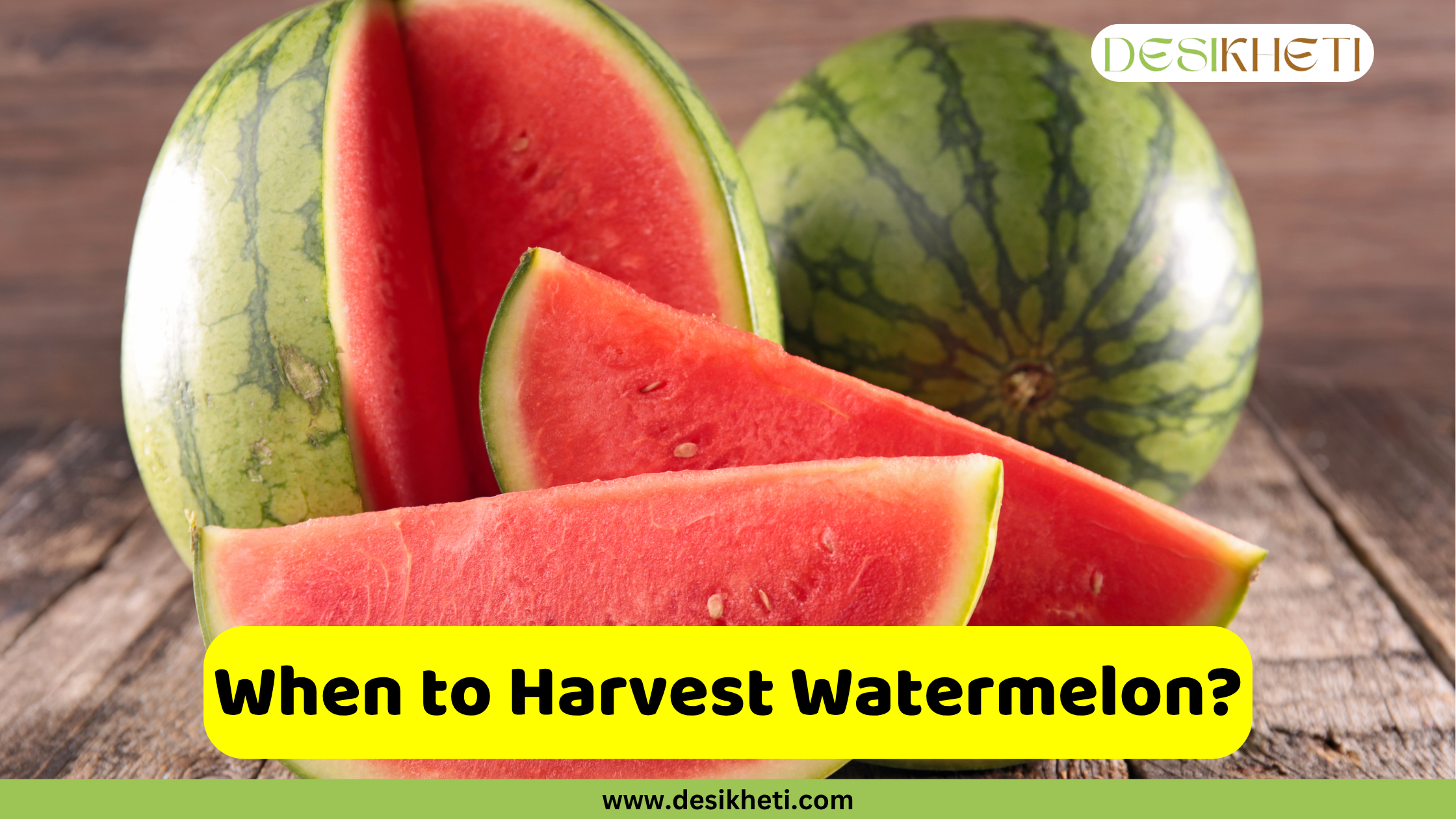Table of Contents
Introduction
Watermelon is one of the most popular summer fruits in India, loved for its sweetness and refreshing taste. For farmers, harvesting watermelon at the right stage of maturity is very important because the fruit does not continue to ripen once it is picked. If harvested too early, the fruit may taste bland and fetch a low market price. On the other hand, overripe watermelons may crack, lose quality, and have a shorter shelf life.
Identifying the correct harvest stage can sometimes be confusing, especially for new growers. However, with a few simple observations such as changes in tendrils, ground spot color, and fruit sound farmers can accurately determine the right time to pick watermelons.
Want to know how to identify if a watermelon is mature for harvest? Then you are at the right place. This blog will help you learn easy and practical ways to identify if a watermelon is ready for harvest.
Look at the Belly
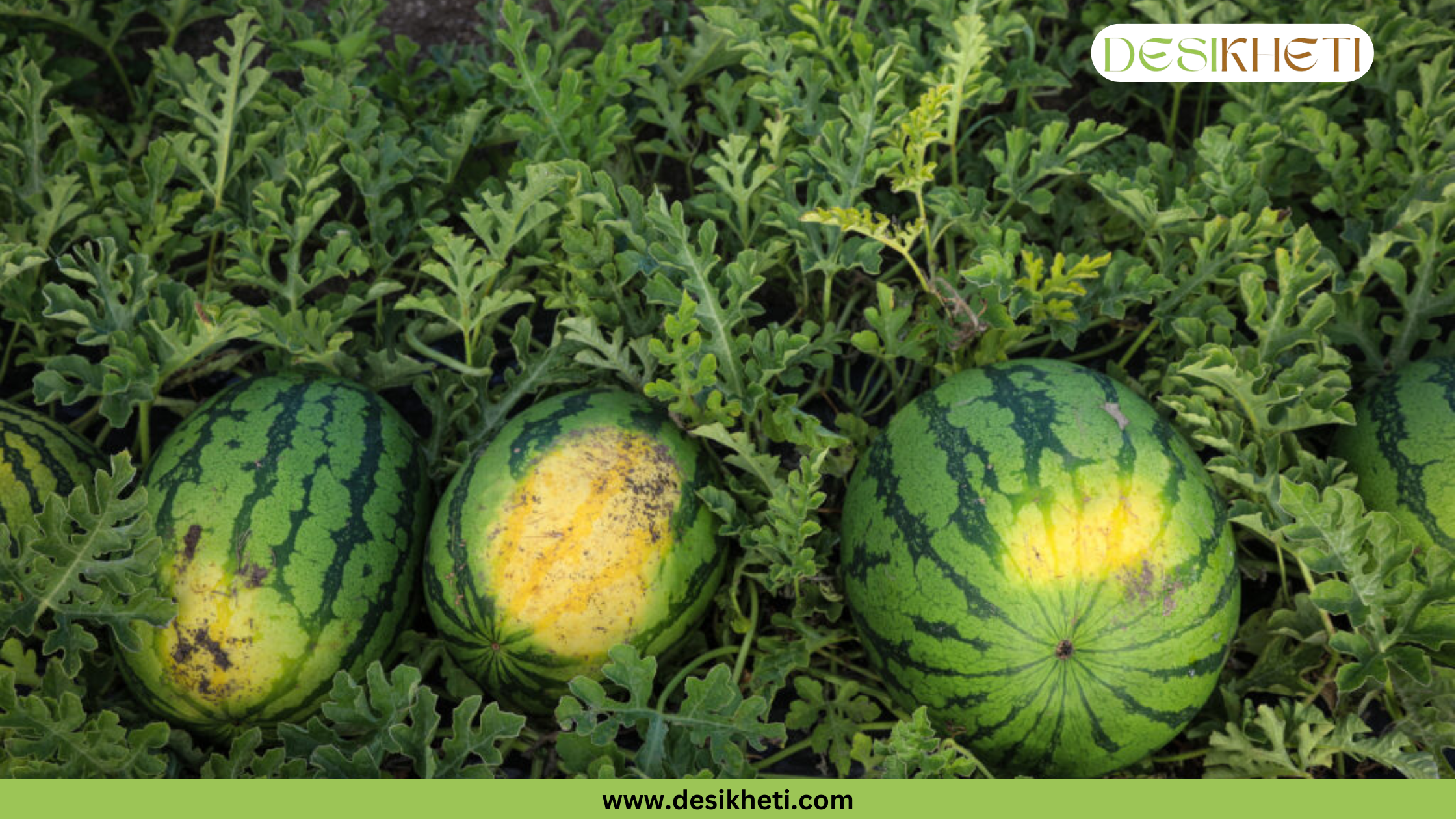
One of the easiest ways to know if a watermelon is ready for harvesting is by looking at its belly, or ground spot. This is the part of the fruit that touches the soil while growing. When the watermelon is raw or immature, the belly is usually white or pale green in color. As the fruit matures, this spot changes to a creamy yellow.
A rich, buttery yellow belly is a strong sign that the watermelon has ripened naturally on the vine. If the spot is still white or light green, the fruit may need a few more days to mature fully. Always choose the fruit with a yellow belly, as it indicates the fruit has stayed on the plant long enough to develop full flavor and sweetness.
Thump It
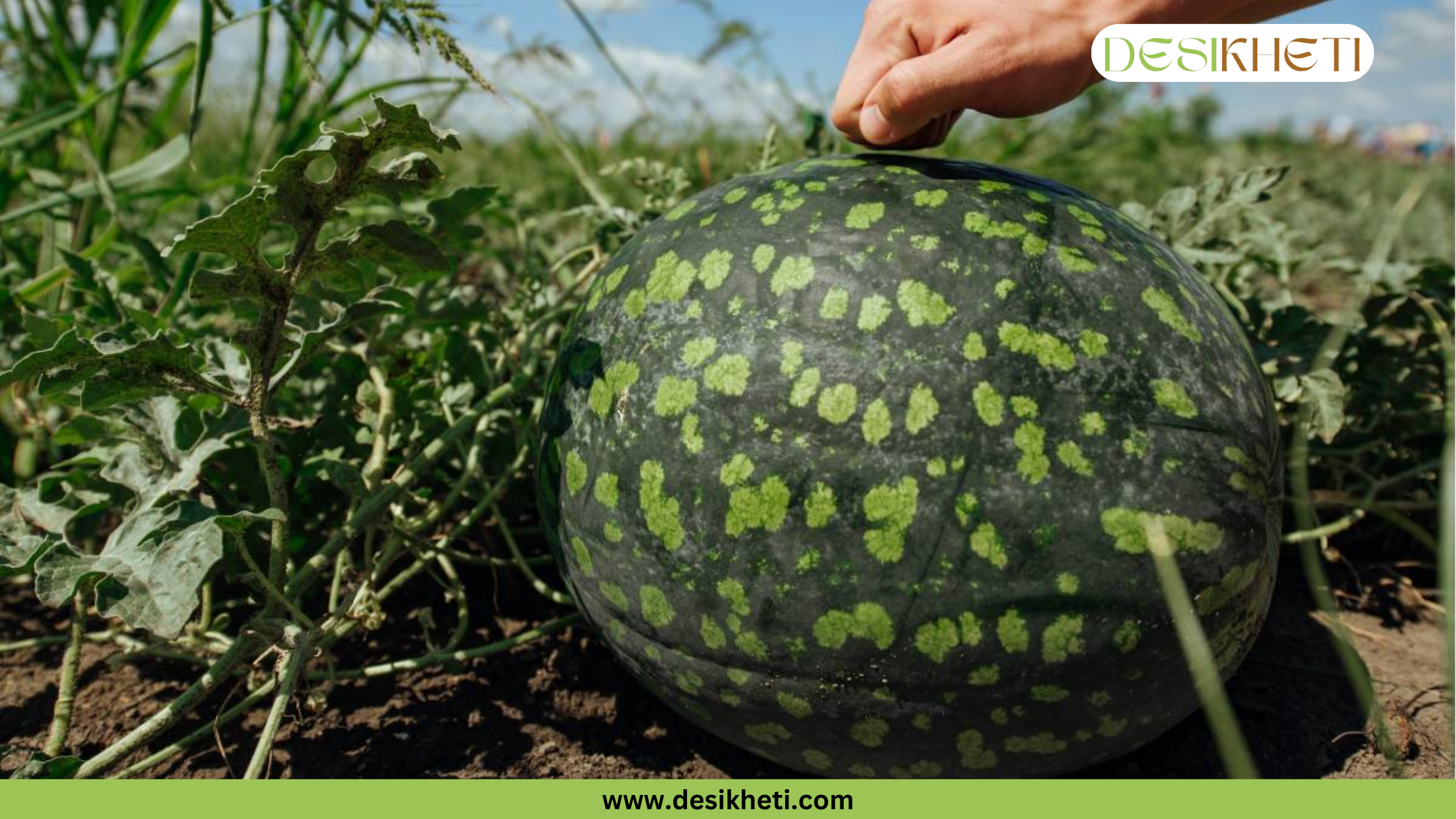
Another popular and traditional way to check if a watermelon is mature is the “thump test.” This method is used by many experienced farmers and fruit sellers across India. To do this, gently tap or thump the watermelon with your fingers or knuckles. A ripe watermelon gives a dull, deep, and hollow sound, almost like the beat of a drum. On the other hand, if the fruit makes a high-pitched or metallic sound, it is likely still raw or immature.
Some farmers also say that when a watermelon is fully ripe, the thumping produces a soft “pung-pung” sound, whereas unripe ones make a sharp “ping-ping.” It takes a little practice, but once you learn the difference, this test becomes very useful, especially during bulk harvesting.
Smell the Fruit

Another natural method to judge watermelon ripeness is to smell the fruit, especially near the stem or navel area. A ripe watermelon often gives off a mild, sweet aroma, indicating that the sugars inside have fully developed.
While this test is not always as strong or reliable as the yellow patch or thump test, it can still be useful when checking multiple fruits. If the watermelon has no smell or smells slightly green, it might not be ready yet. A soft, fruity aroma is a good sign that the fruit is mature.
Feel the Firmness of the Fruit
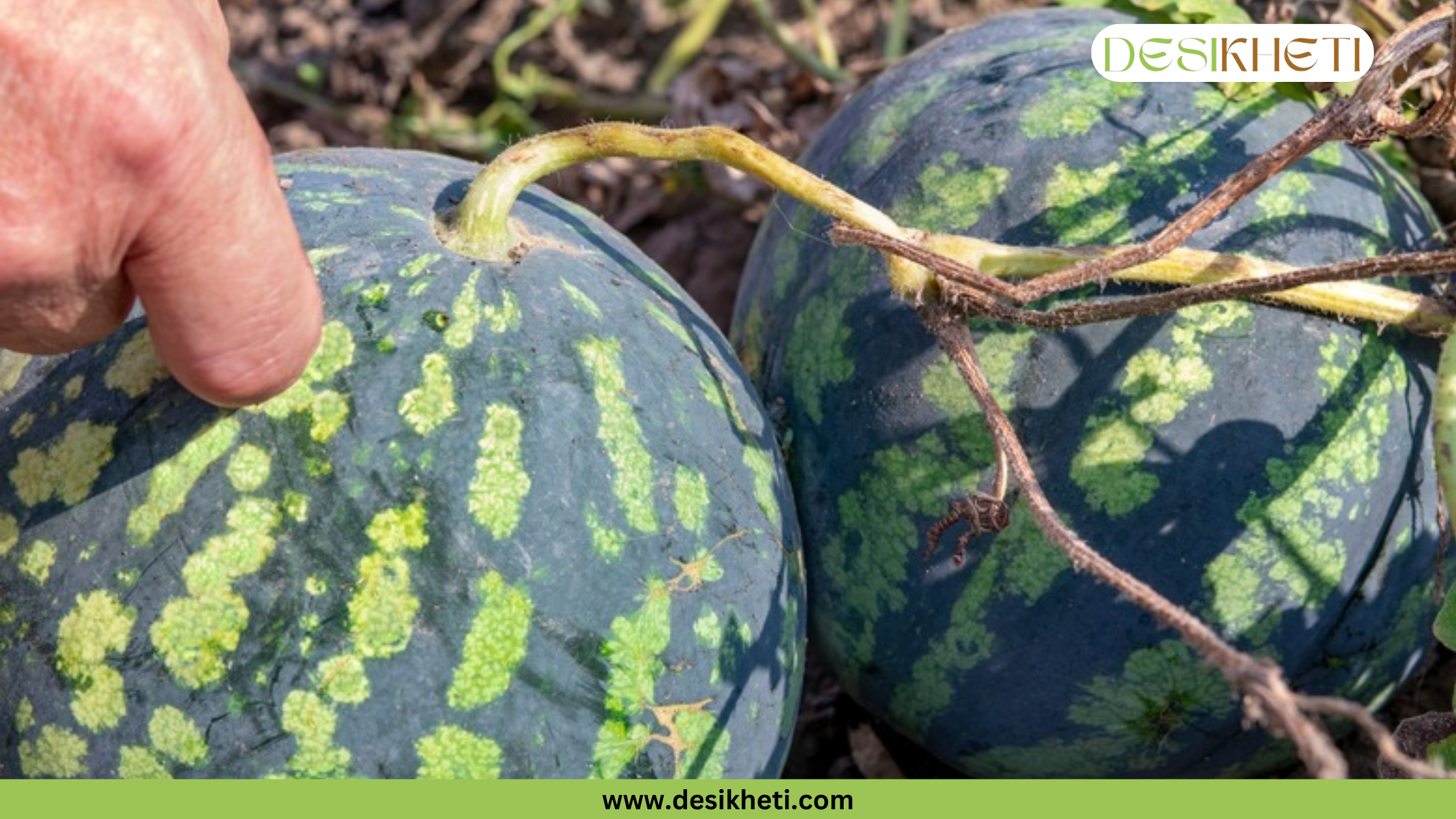
A gentle squeeze can also help you determine if a watermelon is ready for harvest. When you press the sides of a mature watermelon, it should feel firm and solid, but not too hard. If you listen closely while pressing, a ripe fruit may even give a crisp cracking sound, which indicates that the inside is juicy and well-formed.
If the watermelon feels too soft, it may be overripe or damaged. If it is too hard and gives no sound or response, it may still be unripe. This method works best when done gently—do not press too hard, or the fruit may get damaged.
Check Its Weight – Heavier Means Juicier
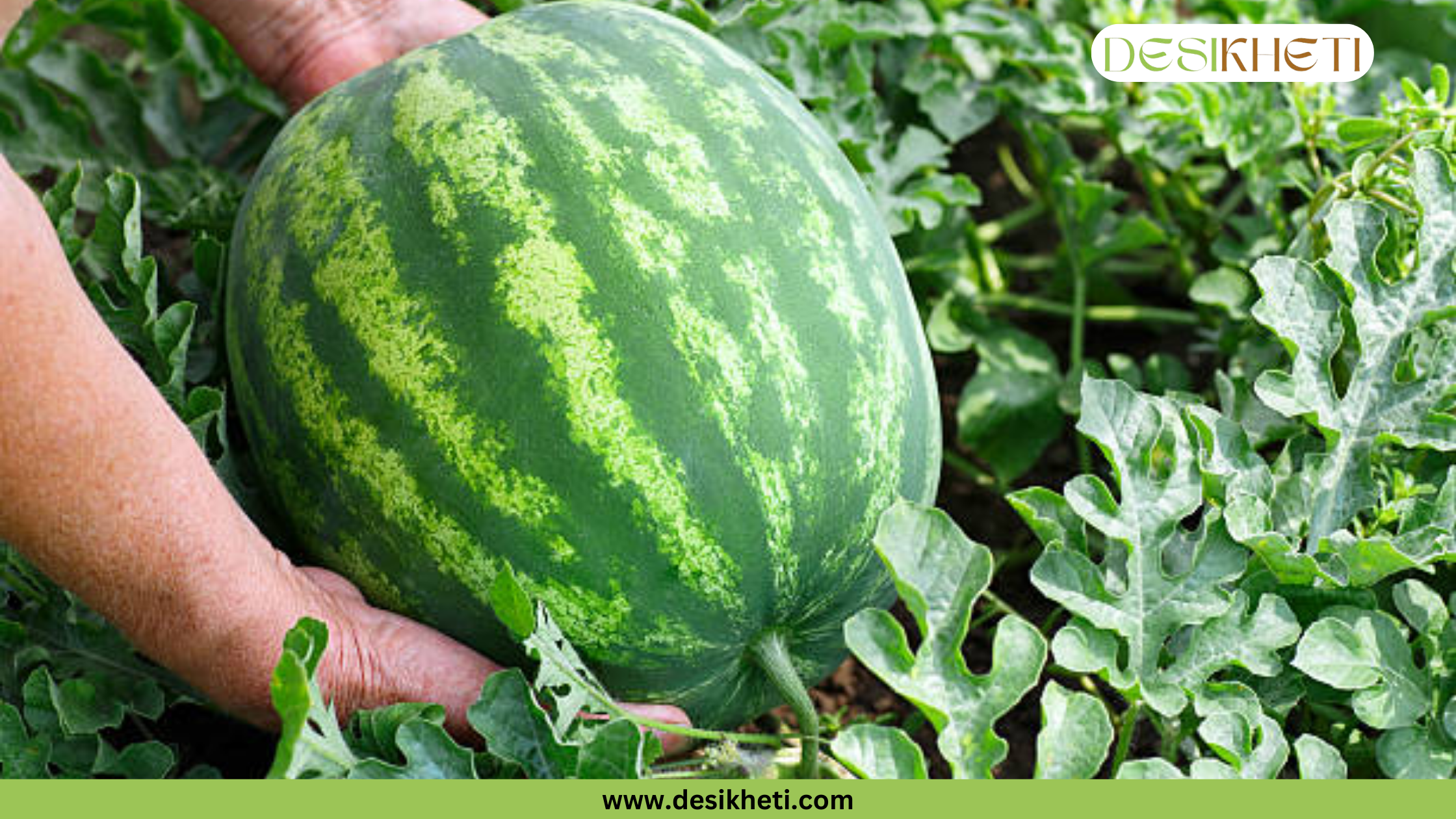
One of the easiest ways to know if a watermelon is ready for harvest is to lift it and feel its weight. A ripe watermelon feels heavy for its size, which means it is full of juice and properly developed inside.
When you compare two fruits of similar size, always pick the heavier one. The extra weight comes from high water content, which is a good sign of ripeness. Lighter watermelons may not have developed fully and may still taste watery or bland.
Check the Calendar
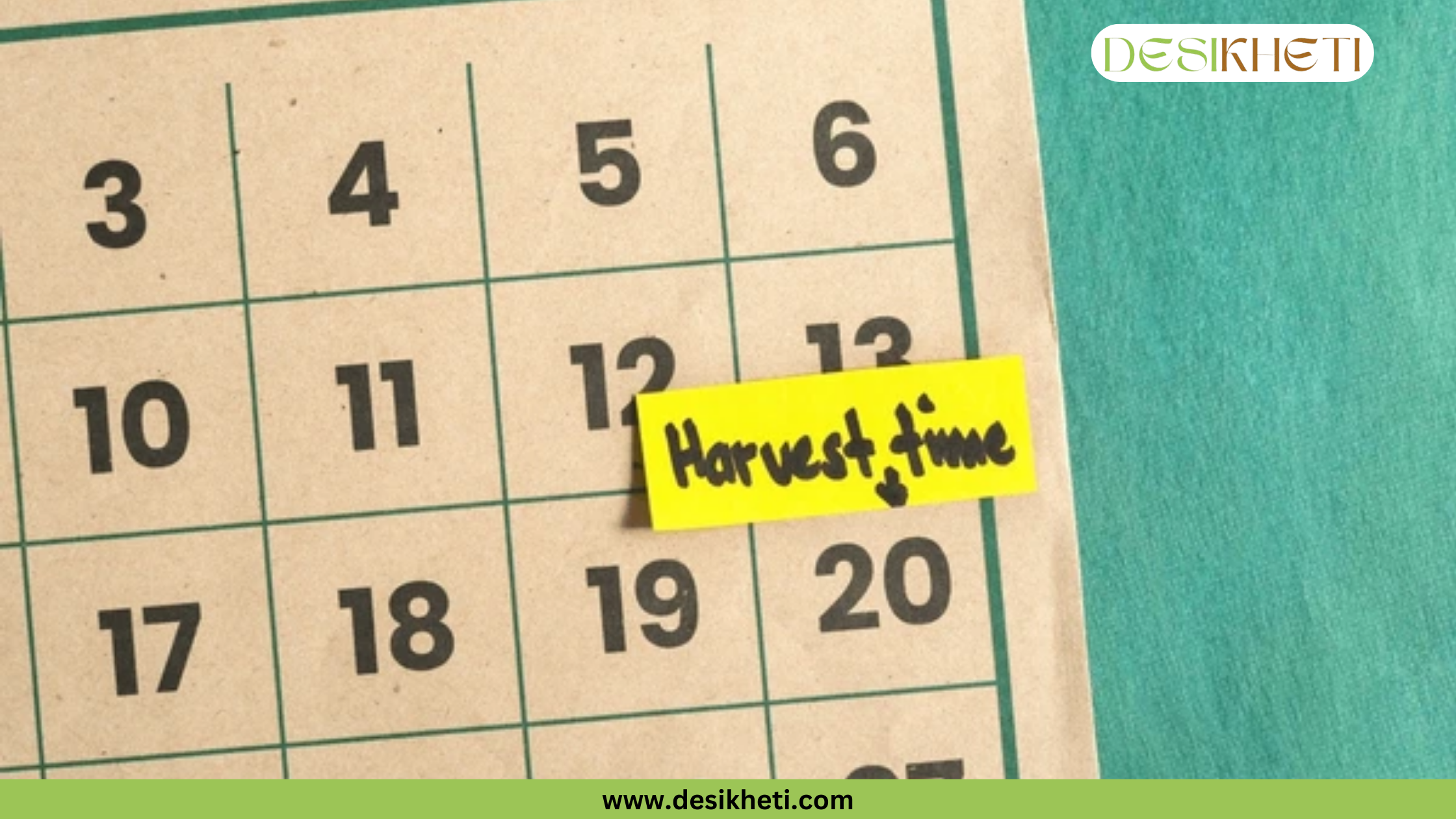
Apart from physical signs, it is also important to track the number of days since sowing or flowering. In general, watermelon crops are ready for harvest about 100 days after sowing, depending on the variety and season. More accurately, fruits usually mature around 40 days after anthesis (flowering).
Farmers who maintain a proper crop calendar can use this information to plan harvesting at the right time. If the fruit is harvested too early, it will not be sweet. If left too long, it may become overripe or crack.
Examine the Vine
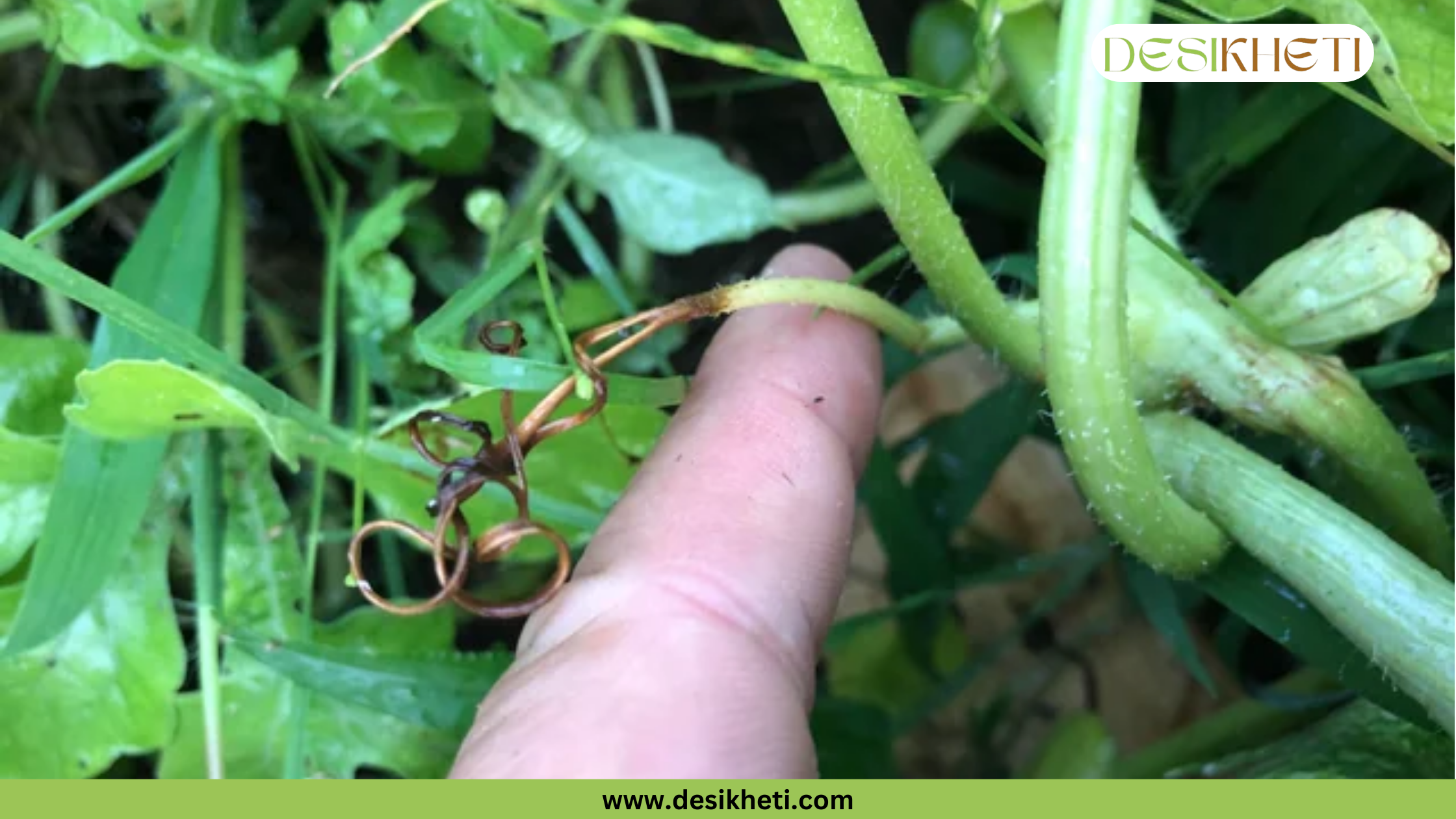
A helpful way to check watermelon maturity is by looking at the vine and stem near the fruit. When a watermelon is mature, the small portion of the vine connecting the fruit to the main plant begins to dry and turn brown. This drying is a natural signal that the fruit has stopped growing and is ready for harvest.
If the vine is still green and fresh near the fruit, it usually means the watermelon needs a few more days. But if the stem is partly dry and slightly shriveled, it indicates that the fruit has developed on the vine.
A smart trick many experienced farmers use is to carefully observe the fruit’s stem connection and then repeat the thumping test at that spot. The part where the watermelon is attached to the vine can reveal a lot. If this connection point looks dry, slightly brown, or even cracked, it often means the fruit is mature.
After checking the stem, perform the thumping test again, especially near this area. A dull, hollow sound here confirms that the fruit is well-filled with juice. This double-check helps avoid harvesting immature fruits.
Check the Tendril
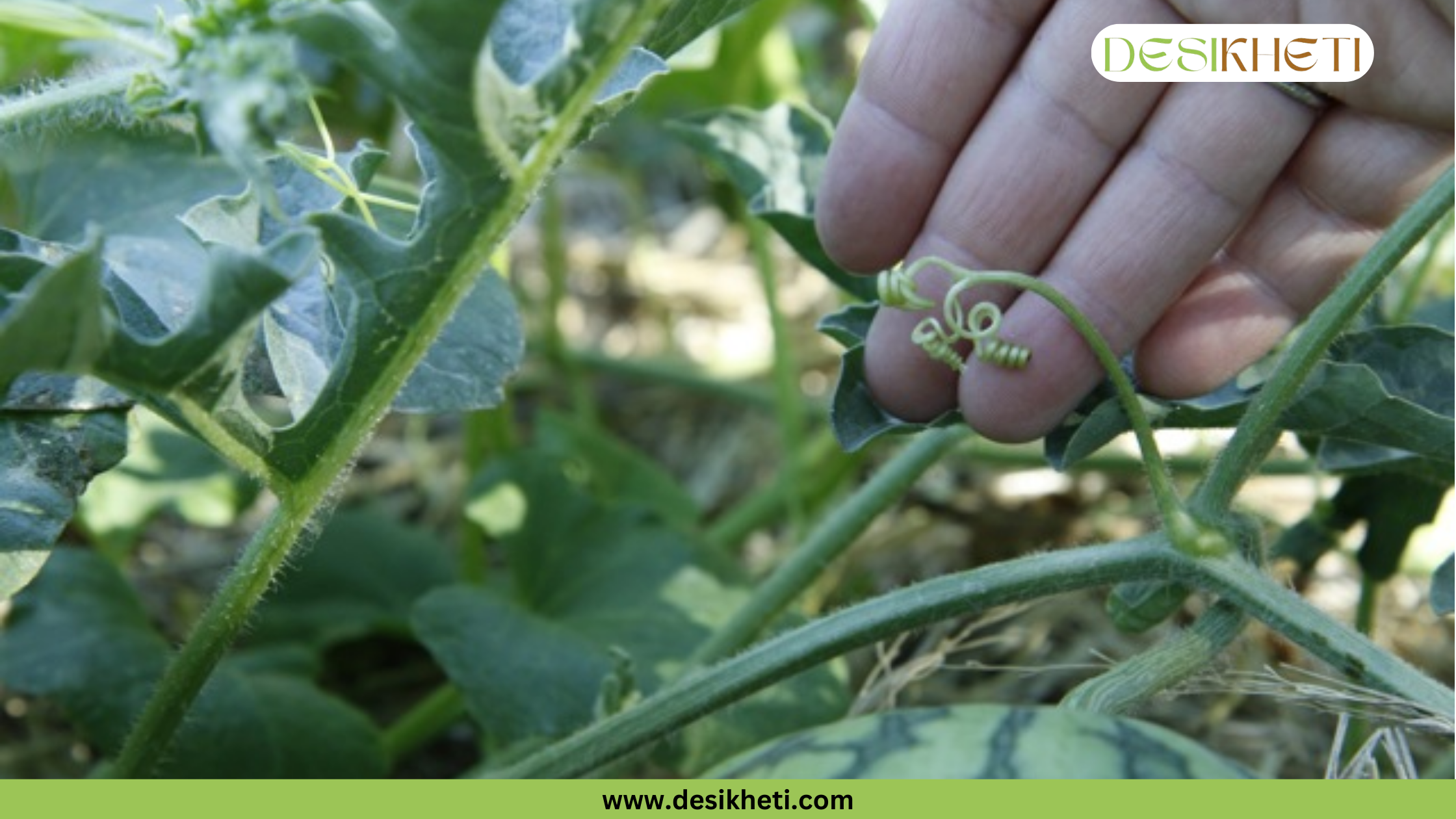
One of the most reliable and age-old signs of watermelon ripeness is the condition of the tendril closest to the fruit. This small curly stem is attached to the vine just above where the fruit grows. When the watermelon is still developing, the tendril remains green and fresh.
Once the fruit becomes mature, however, the tendril starts to dry up, turn brown, and curl. A completely dry and brown tendril is a strong indicator that the watermelon has stopped growing and is ready for harvest. If the tendril is still green, it is better to wait a few more days.
Other Signs
Apart from the main tests like belly color, thump sound, and dried tendrils, there are a few other helpful signs that can support your decision while harvesting watermelons.
- Rind appearance: A ripe watermelon usually has a dull outer skin, not shiny. A glossy skin often means it is still raw.
- Uniform shape: Fully matured fruits are usually even and symmetrical in shape.
- Sugar spots or webbing: Some ripe watermelons develop small brownish web-like marks or sugar lines, which can be a sign of high sugar content inside.
Timely harvesting is the key to enjoying the full sweetness, juiciness, and market value of watermelons. Farmers should not rely on a single sign but instead observe a combination of indicators such as the drying of tendrils, yellowing of the ground spot, dull rind color, and the heavy feel of the fruit. By carefully monitoring these maturity signs, farmers can avoid early or late harvests and improve both yield quality and income.
FAQs on Identifying When Watermelon is Ready for Harvesting
1. Is watermelon hot or cold?
A. In Ayurveda, watermelon is considered a cooling fruit that helps reduce body heat.
2. Where does watermelon grow?
A. Watermelon grows in warm tropical and subtropical regions with sandy loam soils.
3. How long does it take to harvest watermelon?
A. Watermelon takes 70–90 days from sowing to harvest, depending on the variety.
4. How long does it take for watermelon to ripen?
A. It takes about 35–45 days from flowering to fruit ripening, depending on the variety.
5. Does watermelon ripen after picking?
A. No, watermelon does not continue ripening once harvested.
6. Do watermelons have tendrils?
A. Yes, tendrils help watermelon vines climb and spread.
7. How do you know when a watermelon is ripe by sound?
A. A ripe watermelon gives a deep, hollow sound when tapped.
8. Why do people thump watermelons?
A. Thumping helps judge ripeness by checking the sound. A ripe watermelon produces a deep, hollow sound.
9. What does a ripe watermelon smell like?
A. Ripe watermelon has a fresh, sweet, fruity smell near the blossom end.
